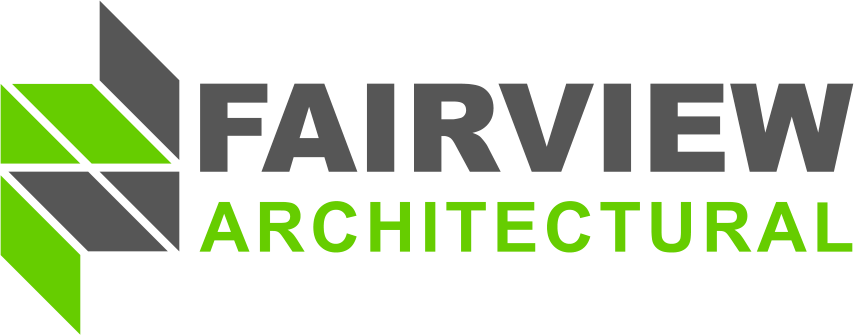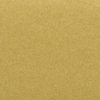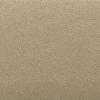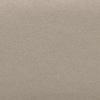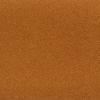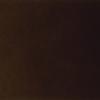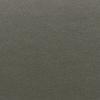By Joshua Bowditch
Vitraplate® by Fairview Architectural
Vitraplate® is a 3mm (1/8″) prefinished solid aluminum cladding product made from aluminum alloy 30031. The designation refers to the alloy composition of the cladding material, which has significant influence on the structural and physical characteristics2. Aluminum alloy 3003 has a nominal content of 98.6% aluminum and 1.2% manganese (Mn) as the main alloying element3 for increased strength and formability4. It is used as sheet for exterior cladding applications3, and is a good substrate for architectural finishes2. The 3003 aluminum alloy has strain-hardened temper for increased strength and hardness2.
Aluminum: Supply Chain and Processing
The supply chain of aluminum is complex. Fairview Architectural purchases coils of the mill-finish aluminum, standardized per 3003, from aluminum coil manufacturers such as Texarkana Aluminum. Coil manufacturing is an intermediate process that involves receiving ingots, the stock form of aluminum, from an outside source. It is important to realize that the aluminum industry has become highly globalized7. Production of virgin aluminum metal, known as primary aluminum, is an electrochemical process that is very energy intensive7. It is Texarkana Aluminum’s initiative to use primary aluminum that is produced with sustainable energy8, such as natural gas or renewable energy sources. Texarkana Aluminum products have a post-industrial (pre-consumer) recycled content of 65%9. The aluminum is melted and cast into “rolling ingots” specifically for the hot-rolling process. These are fed through a reversing mill and a continuous hot rolling mill which progressively stretch and reduce the aluminum into sheet5. Then cold-rolling is performed to achieve the desired strength and temper, and the continuous aluminum sheet is coiled6. The term “mill-finish” describes the exposed finish of the aluminum inherent from the processes of the mill2.
Exceptional Finishes
Vitraplate® has a polyvinylidene fluoride (PVDF) exterior finish meeting AAMA 2605 performance standards10, providing an exceedingly high level of durability11, and resistance to dirt accumulation because of its fluoropolymer formula12. Fairview Architectural has extensive options regarding the aesthetics of PVDF finishes, and offers architects the opportunity for coordinating custom finishes. The variability of formulations allows for a wide range of colors, gloss, and special effects such as metallic speckling. Specific formulations are proprietary, but constituents such as metal oxides and mica pearlescent are used for aesthetic effects11. The finish is factory-applied by coil coating13, a highly automated and highly efficient process. On a continuous coil coating line, the aluminum is uncoiled, pretreated, primed, coated, cured in a finish oven, then recoiled. The continuous coil process minimizes liquid paint waste with nearly a 100% transfer efficiency, and also accommodates controlled collection of volatile organic compounds (VOCs)14. The exterior finish coating is extremely resistant to adverse conditions including airborne pollutants, salt spray in coastal environments, and other atmospheric corrosives11.
Cladding Efficiency
Vitraplate® is formed by fabricators into cladding panels. Fabrication involves cutting to size, then routing and folding at the perimeter edges to result in continuous returns. When fabricated, panels are ready to mount onto a corresponding attachment system made of extruded aluminum profiles. Vitraplate® is thereby efficiently implemented as cladding panels in exterior wall assemblies consisting of 1/2″ fiberglass mat gypsum sheathing over light gauge steel framing. In this configuration, Vitraplate® is offset from the sheathing, and the resulting airspace functions as a radiant barrier. Aesthetically, joint lines become a feature of the design as predetermined by the architect.
Disclaimer
This article of Architectural Stewardship was sponsored by Fairview Architectural North America. Published here.
References
1Vitraplate® Technical Manual. 2020. Fairview Architectural.
2Aluminum Extrusion Manual, 4th edition. 2014. Aluminum Extruders Council.
3Davis, J. R. 2001. Aluminum and Aluminum Alloys. Page 351-416. In: Alloying: Understanding the Basics.
4Raabe D., D. Ponge, and others. 2022. Making Sustainable Aluminum by Recycling Scrap: The Science of “Dirty” Alloys. Progress in Materials Science
5Hot-Rolled Aluminum, Environmental Product Declaration. 2014. The Aluminum Association
6Cold-Rolled Aluminum, Environmental Product Declaration. 2014. The Aluminum Association
7Aluminum: The Element of Sustainability. 2011. The Aluminum Association.
8Sustainability Statement. 2022. Texarkana Aluminum, Inc.
9LEED Certificate. 2024. Texarkana Aluminum, Inc.
10Vitraplate® Technical Manual. 2020. Fairview Architectural.
11Iezzi, R. A. 2015. Polyvinylidene Fluoride-Based Coatings Technology. In: ASM Handbook, Volume 5B, Protective Organic Coatings. K. B. Tator (ed.)
12Ehrlich, B. 2014. Cladding: More Than Just a Pretty Façade. Environmental Building News 23(9): 1-10.
13Color Design Guide. 2019. Fairview Architectural.
14Pilcher, G. R. 2012. Market Analysis Preview: Coil and Extrusion Coatings. In: CoatingsTech. American Coatings Association
About the Author: Josh Bowditch
As a native resident with architectural experience and environmental regard, Josh Bowditch is intent on publishing about sustainability in the architectural and building construction industry locally. From being in the architectural profession, Josh has an understanding of the processes involved. Is it possible to reconcile environmental considerations with development? The word sustainability has various connotations but indeed can be viewed in the context of stewardship.
